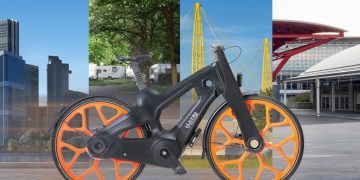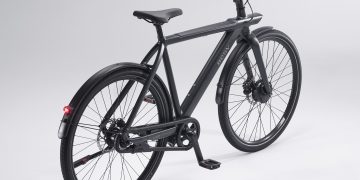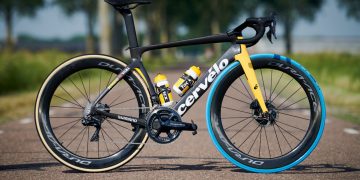Introduction: Why More Reviews Are Focusing on the Green Philosophy Behind Products
In recent years, the spotlight on sustainable design has reached unprecedented heights in virtually every consumer product sector — and the cycling industry is no exception. With growing concerns about environmental impact and a collective global push toward sustainability, eco-friendly bikes are becoming an increasingly prominent focus in the world of cycling product reviews. Experts and cycling enthusiasts alike are starting to see sustainable design not only as an ethical choice but as an enhancement to performance, longevity, and overall value.
What’s driving this shift? As more brands adopt green practices in their production methods, the focus is expanding beyond just the bike’s performance or aesthetic appeal to include its environmental footprint. As a result, reviews are no longer solely centered around traditional metrics like speed, weight, or handling. Instead, sustainable features are becoming pivotal in evaluating a bike’s overall worth.
Eco-conscious consumers are more aware of the importance of sustainability in shaping the future of products they buy. Whether it’s choosing a bike with recycled materials, biodegradable composites, or energy-efficient technologies, sustainable designs are increasingly being seen as an essential element of a well-rounded product review. For cycling brands, integrating these sustainable practices can make a real difference in how products are perceived by both critics and consumers.
This article will explore how sustainable design influences modern bike reviews, the integration of green features that enhance performance, expert opinions on eco-performance, and a comparative analysis between green and conventional models. We’ll also consider the future of this trend, asking whether sustainable design could indeed become the secret ingredient for top-rated bike reviews.
Sustainable Features that Boost Performance
When it comes to sustainable design, it’s not just about choosing environmentally friendly materials—it’s about creating bikes that balance performance, durability, and aesthetics while being mindful of their environmental impact. Many manufacturers are now incorporating green features into their bike designs, with a particular focus on how these innovations can enhance functionality and long-term performance.
Let’s break down some of the key sustainable features that can boost performance:
1. Recycled Materials for Durability and Lightweight Design
Using recycled materials in bike production is one of the most prominent examples of eco-performance. Recycled aluminum, for instance, offers a sustainable alternative to traditional materials without sacrificing strength or durability. Recycled materials such as aluminum and steel are widely used in bike frames and components. Not only do these materials significantly reduce the carbon footprint of production, but they also maintain the necessary strength-to-weight ratio that contributes to a bike’s overall performance.
For instance, bikes made from recycled aluminum offer the same level of strength as their traditional counterparts but with a lower environmental impact. In fact, recycled aluminum is often just as durable, if not more so, due to the nature of the material’s reprocessing. This makes it an attractive choice for manufacturers looking to merge sustainability with high-quality performance.
2. Energy-Efficient Technologies
As electric bikes (e-bikes) continue to rise in popularity, energy efficiency has become a core aspect of sustainability in cycling. The inclusion of electric motors, regenerative braking, and solar-powered charging systems in some models has revolutionized how bikes are used for commuting and long-distance cycling. These energy-efficient features ensure that the bike not only reduces carbon emissions but also maximizes energy use.
The ability to conserve and optimize energy is increasingly seen as a performance-enhancing feature. For example, regenerative braking systems can recover energy that would otherwise be lost and return it to the battery. This added efficiency extends the bike’s range and reduces the frequency of charging, making e-bikes even more practical for daily use.

3. Use of Sustainable, High-Performance Components
Eco-friendly bike manufacturers are finding innovative ways to incorporate sustainable materials into bike components such as tires, handlebars, and saddles. Bamboo and biodegradable composites are being used in select components. Bamboo, known for its lightweight properties, is an increasingly popular material for bike frames, especially in designs that aim to combine eco-friendly aesthetics with high-performance standards.
Incorporating sustainable yet high-performance materials into the design of bikes ensures that eco-friendly models are not just “green” in name but also competitive in terms of handling, stability, and comfort. This focus on quality craftsmanship, alongside the emphasis on environmental benefits, makes these bikes a viable choice for cyclists who demand high standards of performance.
Expert Opinions on Eco-Performance
Experts in the cycling industry are beginning to embrace sustainable design as an important factor when evaluating bike performance. Not only is the shift towards greener manufacturing seen as an ethical move, but it is increasingly regarded as a competitive advantage. Many experts are now including eco-design and sustainability metrics in their reviews, alongside traditional performance criteria.
Performance Meets Sustainability: In expert reviews, eco-performance has started to influence the overall verdict. Sustainable bikes are no longer just viewed as a “niche” market but as mainstream contenders. Experts in the field are praising sustainable design not just for its eco-friendliness, but for how it enhances the riding experience. When smart technologies, lightweight materials, and energy-efficient systems come together in a sustainable product, it’s often seen as a sign of innovation that benefits cyclists and the planet alike.
Some experts have noted that eco-friendly bikes can offer improved performance over traditional models in certain areas. For example, lightweight materials like carbon fiber alternatives (such as bamboo or recycled composites) are praised for being strong yet lightweight, which translates to a smoother ride and better overall performance in urban or trail environments.
Comparative Review: Green vs. Conventional Models
To truly evaluate the impact of sustainable design, we need to compare green bikes with conventional models that don’t emphasize eco-friendliness in their production process. Let’s look at some key factors:
1. Performance: While conventional bikes often use carbon fiber and aluminum in their frames for performance and durability, eco-friendly bikes are utilizing alternatives such as recycled aluminum, bamboo, or biodegradable composites. The performance gap between the two types is closing, especially with advancements in material science. In terms of weight, stiffness, and handling, many green models are performing just as well as their conventional counterparts, although traditional bikes still hold an edge in extreme performance settings, such as professional races.
2. Price: Eco-friendly bikes often come with a higher price tag due to the use of sustainable materials and eco-conscious production methods. However, the long-term value of eco-friendly bikes can make them more cost-effective in the long run. The durability of sustainable materials, combined with the energy efficiency of e-bikes, makes them attractive options for commuters and daily riders.
3. Sustainability: This is where the real difference lies. Conventional bikes often have a larger carbon footprint due to the materials used and the manufacturing processes employed. Eco-friendly bikes, on the other hand, emphasize minimal environmental impact at every step of the process, from production to disposal. For environmentally conscious consumers, this is the deciding factor.
Conclusion: How Sustainable Design is Changing Product Review Standards and Future Market Trends
As consumer demand for more sustainable options continues to rise, eco-friendly design is becoming a crucial metric in how products are evaluated. In the bike industry, the integration of sustainable materials, energy-efficient technologies, and green production methods is altering the standard for what makes a high-performing, valuable product.
In the future, we can expect to see more emphasis on sustainability in bike reviews, with experts increasingly considering the environmental impact alongside traditional performance factors. As technology improves, sustainable bikes will become even more affordable and competitive, offering consumers the best of both worlds: high performance and low environmental impact.
Ultimately, sustainable design is not just a trend but a shift in the way consumers view products. In the cycling world, it’s a shift toward bikes that not only perform well but also protect the planet, making them the future of cycling.





































Discussion about this post